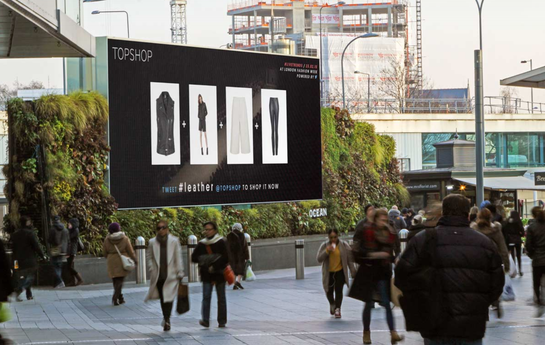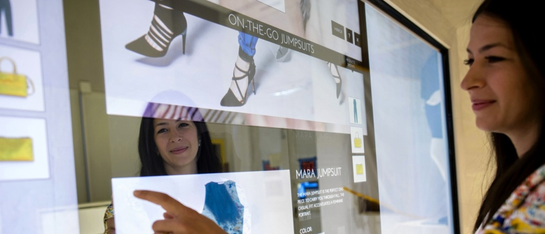Economic Downturn FAQ for Advertisers
Consider this post a breathing FAQ for all of your COVID-19 questions, with answers and effective management strategies from our team of marketing experts.
Read More
Multi-channel marketing is the new norm for marketing teams. Modern consumers shop across devices, both online and in-store, and often start shopping with one method and finish shopping using another. That means that marketers have to create a complete and seamless experience for their audience to compete for sales. A handful of industry leaders stand out when it comes to mastering the multi-channel approach. Here are some examples of the best multichannel campaigns to help spark inspiration for new strategies.
Apple took a unique approach with its retail stores after recognizing that the majority of its sales come through e-commerce. Rather than focusing on sales, the retail locations provide enhanced customer experiences, serving to immerse Apple users with the brand. Because customers feel less pressure to purchase, they make more frequent trips to the stores.
The stores also serve as fantastic advertising with its consistent aesthetic that’s easily identifiable. They’re typically located in desirable locations and constructed with modern architectural details that stand out in any environment. To keep people even more engaged with their brand throughout the day, Apple is adding new revenue streams via hardware such as Apple TV+ and Apple News+.
Takeaways from Apple:
The UK-based fashion company used digital billboards throughout the UK during London Fashion Week to promote its latest catalog. The company synced the advertisements with its Twitter data, so when followers used the hashtag #LFW, the billboard would display the tweet and a relevant item from the catalog. For example, if the tweet #colourblocking appeared, related clothing items and lookbook photos would appear on the billboard.
Better yet, the advertisements were all placed within ten minutes of the company stores, so any viewers who were interested could immediately walk over and pick up the items they wanted. The company earned a 75% boost in revenue for the outfits related to the #LFW hashtag.
Image: Stackla
Takeaways from the Topshop Multichannel Campaign:
Starbucks continues to lead the pack in marketing and branding with their Starbucks Reward App. Unlike other companies that offer loyalty reward cards, Starbucks introduced the ability to check and reload cards by phone, on its website, in the app, and in-store. All channels are updated immediately, and the process is fast enough that you can reload the card while you wait in line to order. This omnichannel approach to the loyalty program encourages customers to use it and prevents barriers to participation.
Takeaways from Starbucks:
The athletic wear company, Under Armour, leverages celebrity endorsements from the likes of The Rock, Tom Brady, and Michael Phelps to attract social media followers and capture audience attention. Once followers land on the UA Shop app, they receive personalized, lifestyle-based recommendations that appeal to modern consumers.
In 2015, the company took another creative step to expand its presence in the daily lives of consumers by purchasing the MyFitnessPal app. The new channel made Under Armour the leading fitness tracking company and an essential part of its audience’s lifestyle.
Takeaways from Under Armour:
Rebecca Minkoff, the women’s clothing designer, had one of the most successful multi-channel marketing campaigns to date. The brand incorporated online services into their retail locations to better serve their target audience of digital natives. Rebecca Minkoff noticed that shoppers at their brick-and-mortar stores would refer to their phones while shopping to read details about the clothes and reviews from past customers. They also checked sizes online if they couldn’t find them in-store and purchased from the website instead.
The brand introduced some of these digital tools in their store through interactive screens to aid shoppers in their decision-making process and help move them through the buying journey while they were actively engaged with the brand. Consumers could see website photos, view available sizes, read about material details, check reviews, and more. They’re also able to send the information to their cell phones so they could complete purchases via mobile. This feature helped to capture sales even if the particular location didn’t have the shopper’s size. After introducing these technologies, ready-to-wear sales increased 6-7x within just six months.
Inage: Engadget
Takeaways from Rebecca Minkoff:
Though these examples of the multi-channel marketing campaigns showcase larger companies, the lessons apply to brands of all sizes. Consider which of these approaches could be useful to your target audience. What habits do your consumers have when making purchasing decisions? How can you make that process easier and more enjoyable for them? Are there other channels that you haven’t tried yet? Focus on your audience’s unique interests and needs, and start improving the shopping experience by tackling their priority desires. As their interactions with your brand become more entertaining, interactive, and useful, consumers will reward you with stronger sales and brand loyalty.
Now that you've touched on some of the best multi-channel marketing campaigns, learn how to create a seamless customer experience here.
Last updated on October 28th, 2022.

